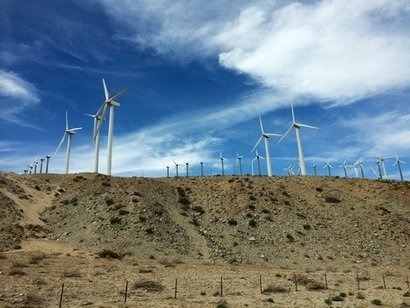
The plan includes upgrades to the company’s existing wind fleet and energy efficiency measures to meet future customer needs. The $3.5 billion expansion plan is set to be in place by 2020 and also incorporates building a segment of the Gateway West transmission line to facilitate wind energy expansion.
The Integrated Resource Plan (IRP), which was filed with utility regulators across PacifiCorp’s six-state service territory, is used as a road map to help the company provide reliable electric service to customers at the lowest cost. It incorporates the investments set to happen by 2020 but also looks 20 years ahead. Projects include upgrades of more than 900 MW of existing wind plants with larger blades and newer technology to generate more energy in a wider range of wind conditions by 2020. Construction will begin on a segment of the Gateway West 500-kilovolt transmission line between Medicine Bow, Wyoming, and the Jim Bridger power plant in the southwestern part of the state. The 140-mile line, set to be in service by the end of 2020, would enable additional wind generation and improve the operational efficiency of the broader system by relieving transmission congestion in Wyoming.
A total of 1,100 MW of new wind projects will be constructed, primarily in Wyoming, by the end of 2020 and another 859 MW of new wind capacity, 85 MW in Wyoming and 774 MW in Idaho, between 2028 and 2036.
1,040 MW of new solar capacity will be installed between 2028 and 2036. The plan also includes environmental compliance obligations for its coal plants.
“These investments will significantly increase the amount of clean renewable energy serving customers and reduce costs at the same time” said Stefan Bird, president and CEO of Pacific Power, the unit of PacifiCorp that serves customers in Oregon, Washington and California. “This is a win-win and represents our continued commitment to both reduce the environmental impact of the energy we produce and keep costs low.”
By moving to complete the wind upgrades and new wind developments by 2020, the company will be able to use federal production tax credits and provide a net savings for customers over the life of the projects.
Energy efficiency continues to play a key role in the company’s long-term resource plans. The 2017 IRP anticipates energy efficiency will offset 88 percent of forecasted growth in energy usage over the next 10 years and continue to limit the need for new power plants.
For additional information:

